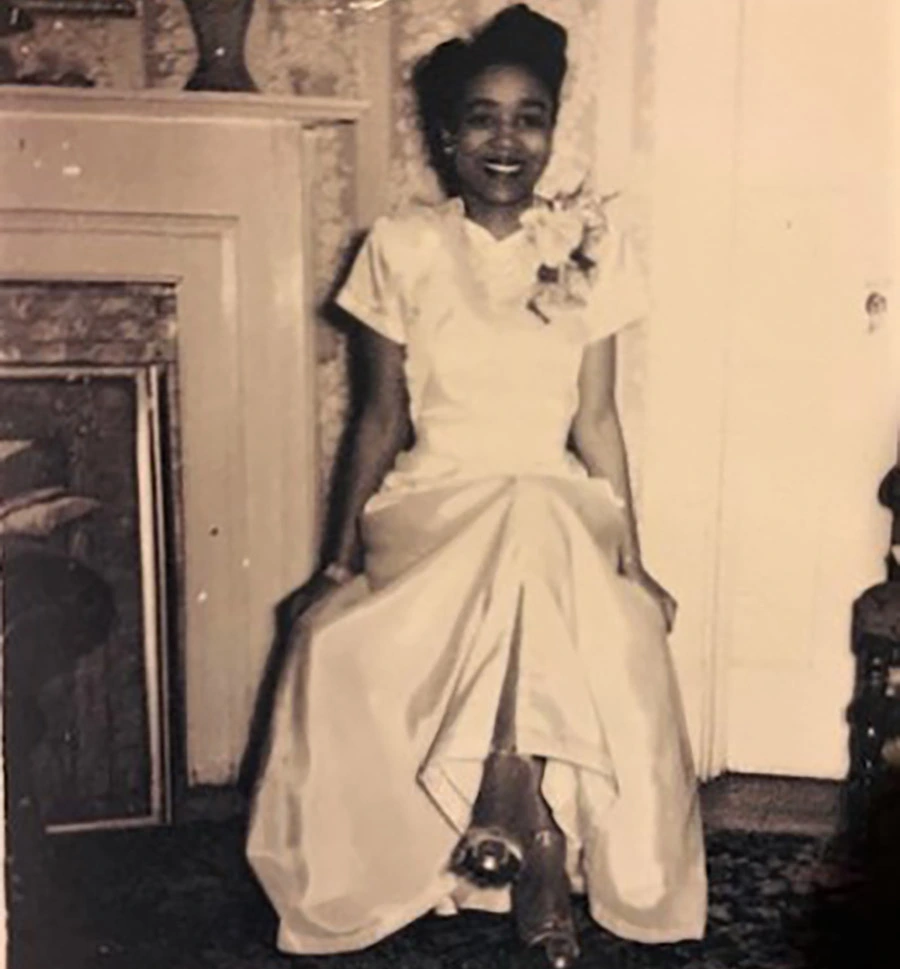One of my earliest memories, when I was just 3 years old, is of my mother, Rosa Lee, asking my dad to place a sticker of a double bar cross in the front door’s window at our new home. I would see this sticker every day and though I didn’t know it at the time, it had greater significance than I could have imagined. It wasn’t until many years later that I would learn that this simple token represented the miracle that was my mother and all of her descendants.
My mother was diagnosed with tuberculosis at the age of 13, first manifesting in her right ankle. She was put in a cast until the itching became so unbearable that the doctor was forced to remove it, uncovering her exposed bone. The disease had eaten away all the flesh, and now to save the limb it required extensive grafting. Though it was known as the "white plague," TB killed Black Americans at alarming rates. Where my mother lived, in Indianapolis, there was initially no hospital available to treat her. Sunnyside, a TB sanitarium, was eventually expanded to include a wing of the house specifically used for treating critical cases of tuberculosis in the Black population. My mother was one of these cases. She was admitted to Sunnyside in 1938 and would remain there for six years (from age 14-20).
My brothers and I grew up hearing stories about Sunnyside; how beautiful the grounds were and how much my mother loved being taken outside to sit in the sun. Or she’d talk about the visits her family, and periodically different church members, would make every Sunday. But she also spoke about the terrifying experience of blood clots moving up into her windpipe (trachea) and how she would push a button alarming a staff person to rush in to shoot her with morphine. Then she remembers ‘blacking out,’ which they say allowed the blood clot to flow back into her left lung—the lung that had been affected by this devastating, uncurable disease. She also told stories of the people she met, very few who were lucky enough to leave the place alive.
What is tuberculosis?
Tuberculosis (TB) is an infectious disease that usually attacks the lungs but can affect almost any part of the body. Though tuberculosis is spread from person to person through the air, it is not easy to become infected. TB can be fatal if it's not treated, but taking medicine as directed can almost always cure TB.
Then, one day, she was transferred to another building, one specifically for patients whose families were asked to pick them up because the disease had become too severe for even Sunnyside to offer comfort. It was in this building, a place of no return, that my mother’s life miraculously took a turn for the better. In this building, recent medical school graduates were permitted to try new procedures they had learned on patients such as my mother who had nothing to lose. Later referred to as “arresting” the disease, the procedure they tried on her requiring the collapsing of the affected lung. My mother survived this experimental procedure and was sent home with the anticipation, still, of having a short life expectancy.
Yet my mother rehabilitated far better than anyone had expected and five years later, she met my father. They were married and had three children—my two brothers and me. She would teach us breathing exercises she had learned while at Sunnyside and we would lay on the bed with her with our legs rested “up-the-wall” which helped improve circulation in the ankle where the TB first affected her. The tree-lined street that we lived on also became the landscape for the annual walks our mother would take us on to collect donations for the National Tuberculosis Association (NTA) (renamed the American Lung Association in 1973). We also had the ritual of pasting Christmas Seals on holiday card envelopes during that season. My mother’s commitment to this organization grew out of the seemingly insurmountable experience she endured, and the hope that research would find a better solution.
It was this same faith that motivated her to live a life that she was told would never be possible—to get married and have a family; to earn a bachelor’s degree in accounting and an MBA, both with honors. She had an award-winning career with the Internal Revenue Service—rising in the ranks and mentoring staff all over the United States. My mother passed away at the age of 74, from non-lung related causes. But her spirit inspired all of us and I see it every day. In my older brother David who followed her footsteps in academia and a successful career, in my younger brother Dohn whose capacity to love is unconditional and unwavering and in my choice to leave the corporate arena to help others in the non-profit world.
These same values are what led me to volunteer with the American Lung Association in 2011. Two days later, I was offered the opportunity to join the staff. I’ve worked with the most amazing people, supporting events that raise money for research, starting over 40 Better Breathers Clubs, providing over 20 Freedom From Smoking Facilitator trainings, mentoring interns and volunteers; all “to save lives by improving lung health and preventing lung disease through education, advocacy and research.” My mother’s spirit guides me into this work every day, in an effort to (in my mother’s own words) “leave the world better than I found it.” It is through this commitment that I experience reminders, or “full-circle moments” throughout my tenure here.
You can view a video of Candace’s breathing exercises inspired by her mother. For more information about tuberculosis visit Lung.org/tuberculosis.
Blog last updated: August 29, 2023




